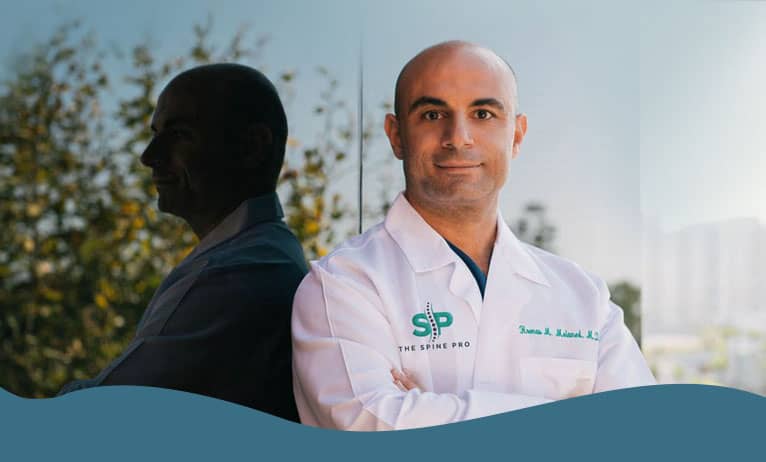The Science Behind Inversion Therapy: Does It Work?
Some studies suggest that nearly 23% of adults suffer from chronic low back pain. If you’re one of the many individuals seeking an effective solution for back pain, you may have come across inversion therapy. Although there is still some debate on the effectiveness of inversion therapy, many believe it is beneficial in relieving back pain. In either case, it is essential to consult your trusted healthcare professional before trying inversion therapy or similar treatments for back pain.
Common Causes of Back Pain
Back pain can significantly impact mobility and quality of life. Your back is composed of individual bones, muscles, and ligaments, which all work together to support your body’s movements. When these components become injured or weakened, it can lead to pain, discomfort, and long-term disability. Promptly addressing back pain is crucial to prevent chronicity and minimize its impact. There are several causes of back pain. Some of the most common causes include:
- Poor posture
- Lifting heavy objects improperly
- Repetitive strain injuries
- Spinal disc herniation
- Arthritis
What is Inversion Therapy?
Inversion therapy is a technique that involves hanging upside down to help relieve pain and tension in the back. It uses devices like inversion tables or chairs to achieve the inverted position safely. During a session, a patient will gradually adjust to an inverted position, usually up to 90 degrees, for a few minutes and then return to an upright position. However, not everyone is a suitable candidate for spinal inversion. Therefore, it is crucial to consult with your healthcare provider prior to trying this technique.
Pros of Inversion Therapy
Under professional guidance, this technique offers several potential benefits for those looking to relieve spinal discomfort. The full effects of inversion therapy may not be experienced until after a few sessions, and the results may vary between individuals. It’s important to note inversion therapy is not for everyone, and you should consult your healthcare provider for more information.
Pain Relief
Inversion therapy can help alleviate back pain by reducing spinal compression and relieving nerve pressure. The elongation of the spine in the inverted position may lead to pain reduction and muscle relaxation, providing relief to individuals suffering from chronic or acute back pain.
Spinal Alignment
Those with postural issues or spinal misalignment may find relief through spinal inversion. The inverted position can encourage proper spinal curvature, making it easier to maintain good posture and improve physical performance. In addition, when your spine is in proper alignment, other body mechanics may also improve.
Improved Circulation
Your circulation is vital for overall health. Spinal inversion may enhance blood flow and oxygenation to the spinal discs. Increasing circulation helps nutrients and oxygen reach the discs more effectively, potentially supporting their health and promoting the healing process. Moreover, enhanced circulation could help relieve pain, stiffness, and soreness in the back.
Cons and Precautions
As mentioned above, spinal inversion is not suitable for everyone. Being in an inverted position increases your blood and eye pressure. This makes it unsafe for those with hypertension, heart disease, glaucoma, detached retina, and ear infections. Furthermore, those with joint and bone disorders such as osteoporosis, a herniated disc, or a spinal fracture should avoid inversion therapy due to the risk of further injury. Lastly, if you are obese or pregnant, it is best to refrain from trying this technique.
During your inversion session, start gradually and in short intervals. Remaining inverted for prolonged periods can increase the risk of dizziness and muscle strain, two common side effects of inversion therapy. Remember to never try this technique without the assistance or approval of your healthcare professional, as it may lead to serious injury.
Effectiveness of Inversion Therapy
The effectiveness of inversion therapy in relieving back pain is still being studied, and its outcomes may vary among individuals. While some people report experiencing pain relief, the scientific evidence supporting its effectiveness is limited. More research is needed in order to determine how effective inversion therapy is. Inversion therapy may be most effective when combined with other approaches, such as exercise and physical therapy. Moreover, spinal inversion may be better suited as a complementary therapy to provide temporary relief and maintain physical functioning.
Revitalize Your Spine With The Spine Pro
When it comes to finding practical solutions for back pain, The Spine Pro is your trusted destination. We provide expert medical attention and personalized care to help you overcome your back pain challenges. Say goodbye to your aches and discomfort with our innovative technology, world-class therapies, and comprehensive treatments. Request an appointment today, and let us help you get back to feeling your best.






